CCGL-382: Colorado Rockies to Southwest Rivers Leadership Semester
Course Code: CCGL-382
Start Date: 9/9/23
End Date: 11/19/23
Embark on a 72-day journey through the mountains, canyons, deserts and rivers of one of the most beautiful and geologically stunning landscapes in the world on this leadership and outdoor skills focused Semester course.
Develop outdoor skills. Enhance your leadership and communication abilities. Strive to increase your knowledge of the environment – all while learning wilderness travel techniques in a variety of natural environments. The ultimate goal of the Semester is to develop the confidence, knowledge and integrity essential for effective leadership. Whether you are learning how to safely tie in on belay, deciding as a group how to navigate through new terrain, or setting up a minimum-impact campsite for the evening, you’ll be reinforcing, honing and practicing skills for life.
Sawatch Range, Colorado
The Sawatch sub-range of the Colorado Rockies is home to Colorado’s two highest peaks: Mt Elbert (14,439’) and Mount Massive (14,429’). The range is known for expansive, rolling alpine terrain and multiple high peaks, and encompasses the headwaters of the Arkansas River. The source of the name is somewhat disputed but some source it to Ute words meaning “green place” or “blue water.” These regions are within the ancestral lands of the Núu-agha-tʉvʉ-pʉ̱ (Ute) nation.
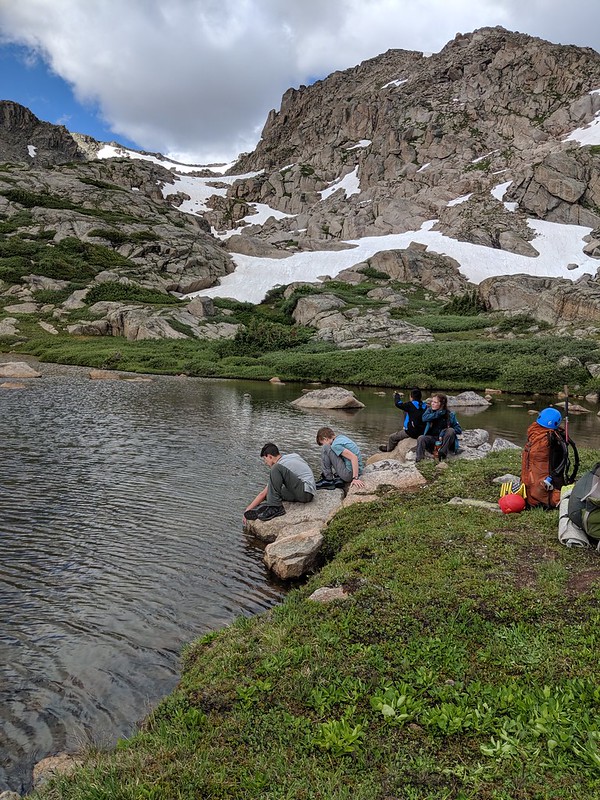
Photo: Terence Copeland |📍Núu-agha-tʉvʉ-pʉ̱ (Ute) lands
Leadville Mountain Center, Colorado
Colorado Outward Bound’s 600-acre property at the base of Mount Massive. Our base camp encompasses mountain streams, wild plants, fields and forests. Lake Fork Creek (that runs into the headwaters of the Arkansas River) runs near the east of our property and the Colorado Trail borders us to the west. If the timing is right, colorful wildflowers will brighten the trails through the LMC. You might share camp with elk, deer, chipmunks and myriad other wildlife. This region is within the ancestral lands of the Núu-agha-tʉvʉ-pʉ̱ (Ute) nation.
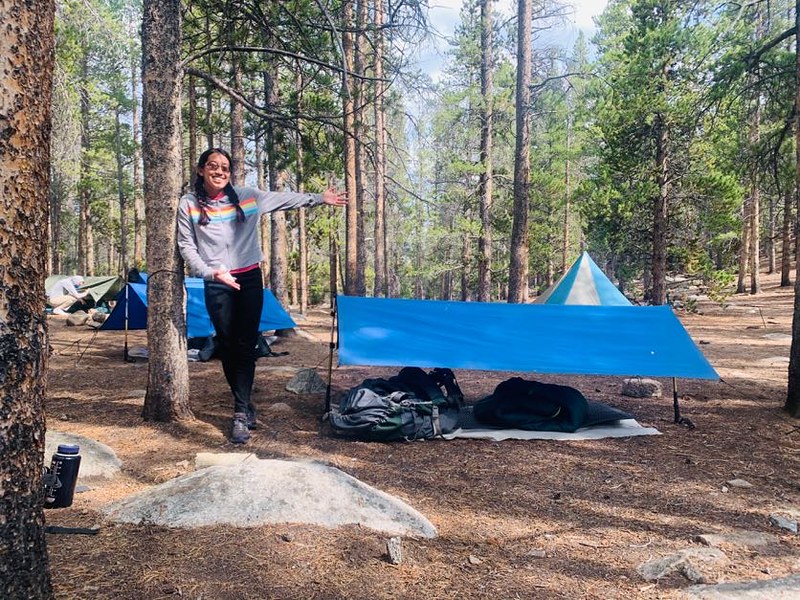
📍Núu-agha-tʉvʉ-pʉ̱ (Ute) lands
Vedauwoo, Wyoming
In an untamed corner of Wyoming’s Medicine Bow National Forest, the granite jewels of Vedauwoo (pronounced “vee-dah-voo”) beckon rock climbers. This surreal land features phenomenal formations of rock nestled into aspen and pine forests. This is the place to discover the perfect mix of wilderness and classroom, as well as an expansive spectrum of beginner to advanced crack and face climbing. The climbing routes vary in length from 50 feet to 200 feet and provide excellent opportunities for both single- and multi-pitch climbing. These regions are the ancestral lands of the Arapaho, Cheyenne and Očeti Šakówiŋ (Sioux) nations.
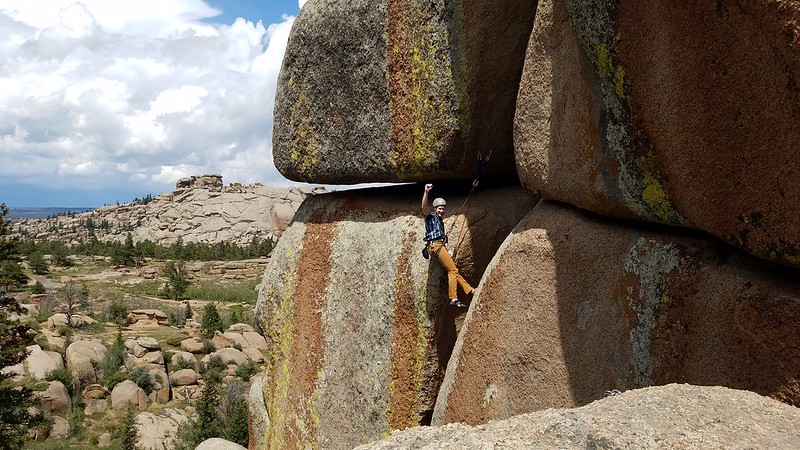
Photo: Matt Olsen |📍Arapaho, Cheyenne and Očeti Šakówiŋ (Sioux) lands
Utah's Canyon Country
The most spectacular aspects of the Utah landscape are the hidden treasures found within its vast canyon networks. The canyons are composed of a spell-binding labyrinth of towering walls, arches, and slot canyons just waiting to be explored. On course, these vibrant formations are a geological playground for scrambling and teamwork. The desert ecosystem is characterized by aromatic plants like sagebrush and juniper and birds soaring high above canyon walls. The days can be hot in the summertime, but it always cools down in the evenings. These regions are within the ancestral lands of the Ute, Pueblos, Southern Paiute, Diné, and Hopi nations.
Labyrinth Canyon, Utah
You will launch on the Green River in two-person canoes for 63 miles through Labyrinth Canyon. The river enters Labyrinth Canyon slowly, named for the serpentine path it carves as it dives deep into the redrock sandstone that characterizes southeastern Utah and the Canyonlands area. Narrow and winding side canyons, towering cliffs rising vertically out of the river, pinnacles and ledges all await you as you fine-tune your paddling strokes. The canoes provide you with great freedom and maneuverability. While many of the skills you learn canoeing are transferable to rafts, the small craft will demand a high level of coordination and cooperation with your canoeing partner. During this phase of your course, your instructors will introduce you to the most important elements of river life: environmental stewardship, outdoor cooking, first aid, natural history of the river canyons, the night sky, and of course, paddling skills. This region is within the ancestral lands of the Ute nations.
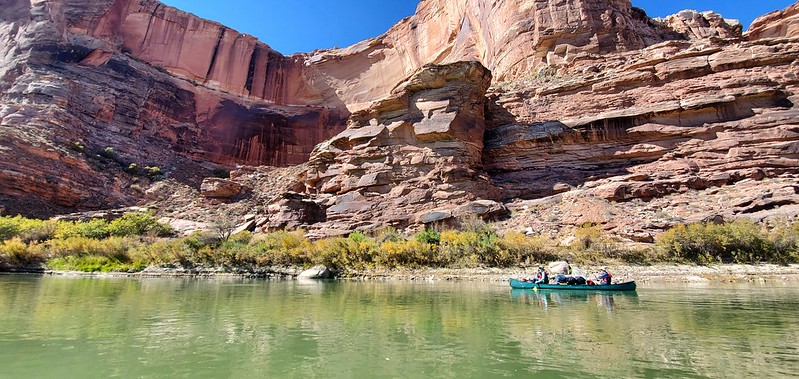
Ute lands
What is a land acknowledgment?
At the Colorado Outward Bound School, we include land acknowledgments in our work as a formal way to recognize and respect the traditional territories and Indigenous Peoples as stewards of the land. It is important to understand and acknowledge the comprehensive past, present, and future of the places we travel and to seek to understand our role therein. To recognize the land is an expression of gratitude and appreciation we give to the Indigenous Peoples who have been living and working on the land from time immemorial. Read more about land acknowledgments at Outward Bound here.
Alpine Backpacking
Alpine Backpacking will develop a foundational outdoor skillset for students allowing comfortable living during course. Traveling mostly above treeline, students will carry everything they need - food, shelter, clothing and gear – allowing them to go deep into the mountains where few people can reach. Backpacking provides a sense of freedom, allowing students to eat when hungry, set up camp when tired, and exercise complete control over what is accomplished each day. The simplicity of backpacking gives students the opportunity to focus both internally on their own thoughts, as well as externally to connect deeply with others as they talk, sing, play games and spend time together without distraction. With the Rocky Mountains as a backdrop, students are introduced to backpacking with lessons in basic travel and camping techniques. As this section progresses, students learn Leave No Trace techniques, map and compass navigation, camp craft, and obtain an understanding of the area’s human and natural history.
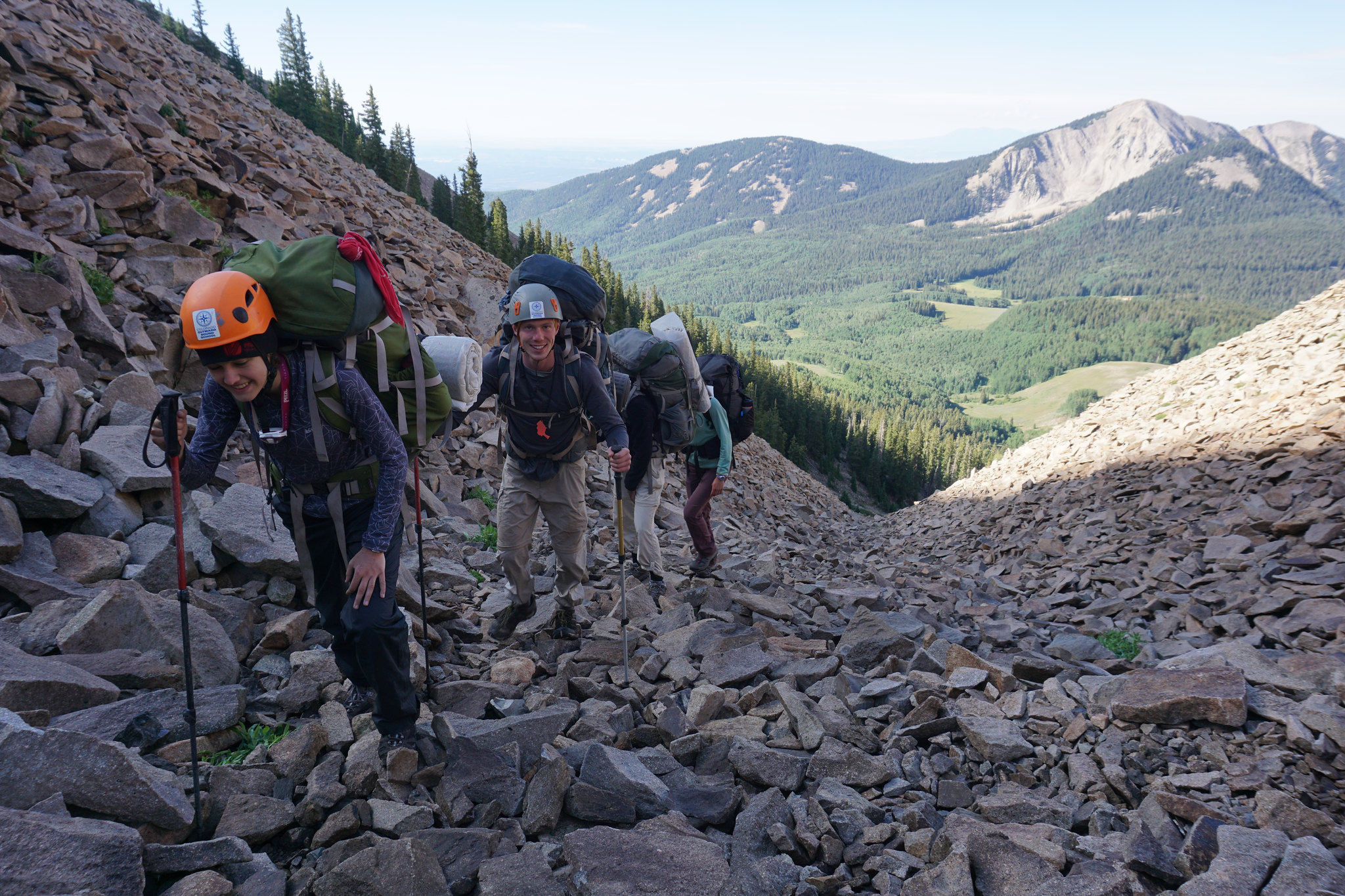
Photo: Dave Erbe |📍Núu-agha-tʉvʉ-pʉ̱ (Ute) lands
Mountaineering
If you are excited to take on an adventure slightly more challenging than alpine backpacking - mountaineering is for you! Mountaineering can be simply understood as a more technical form of hiking that grants students access to some of the most beautiful mountains. Instructors will teach students how to use tools like ice axes and ropes to travel over dirt, snow, ice, and rocks in the mountains. Many mountaineering courses will include attempting to summit a mountain, which involves exposure to heights and technical terrain. These expeditions can last for several hours, but the rewards at the top of the mountain are worth the effort.
You do not need to be an all-star athlete to excel at mountaineering. Enthusiasm for learning technical outdoor skills and spending long days in the mountains are the most important things to bring to course.
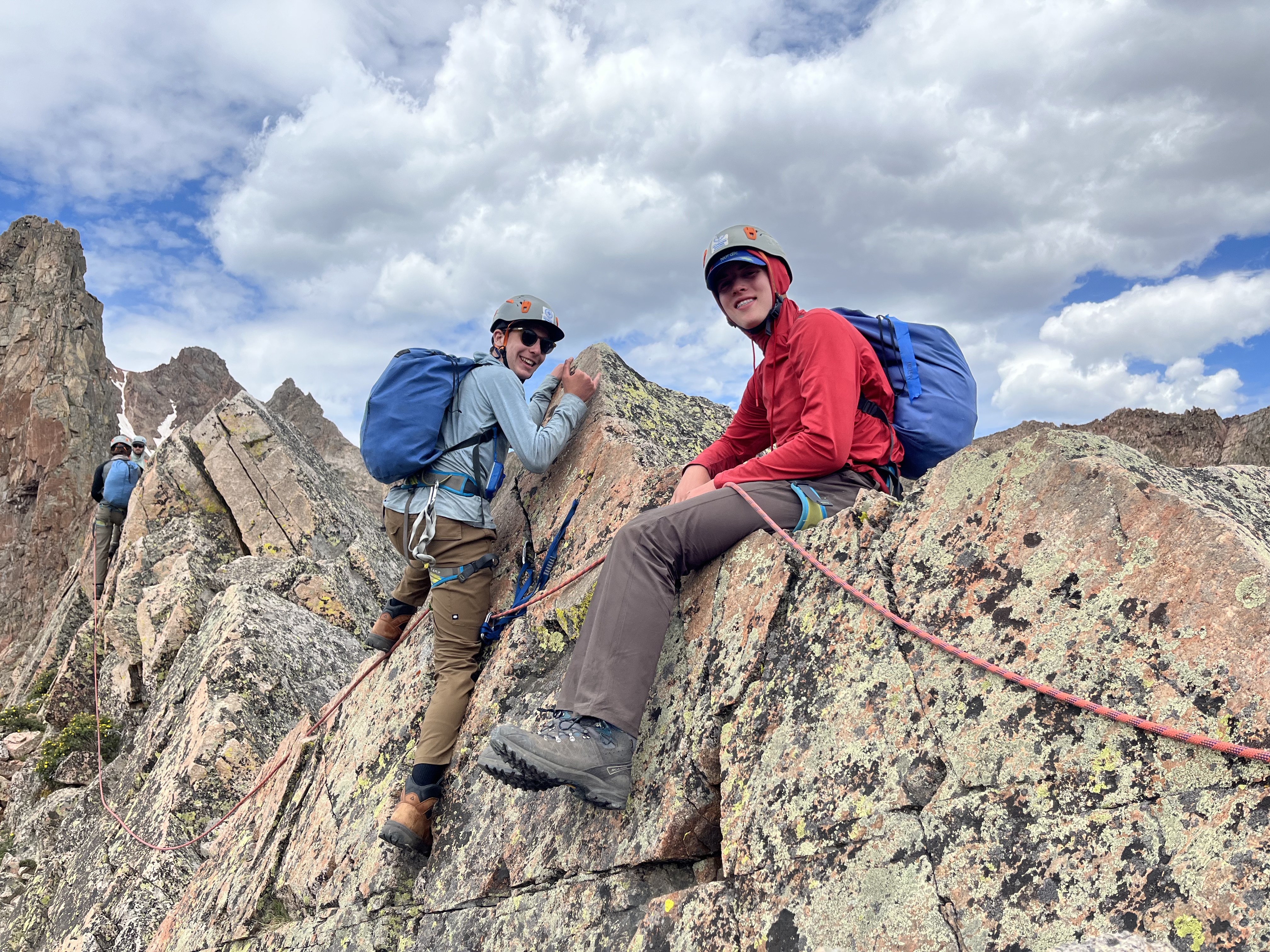
📍Ute lands
Canyon Backpacking
You will journey through awe-inspiring canyon country by foot, carrying everything you need in your backpack. Days will be spent taking in views of arches and working with your crew to navigate the canyons with a map and compass. You'll camp and cook meals on expansive rock slabs with incredible views of the sunset and the milky way. Sometimes you will shed your backpacks for smaller daypacks to navigate into narrow slots or explore thousand-year-old cliff dwellings and rock art. Over time, as you gain confidence in navigating slick rock obstacles, map reading, and setting up camp, your Instructors will give you and your crewmates more responsibility to chart your own path.
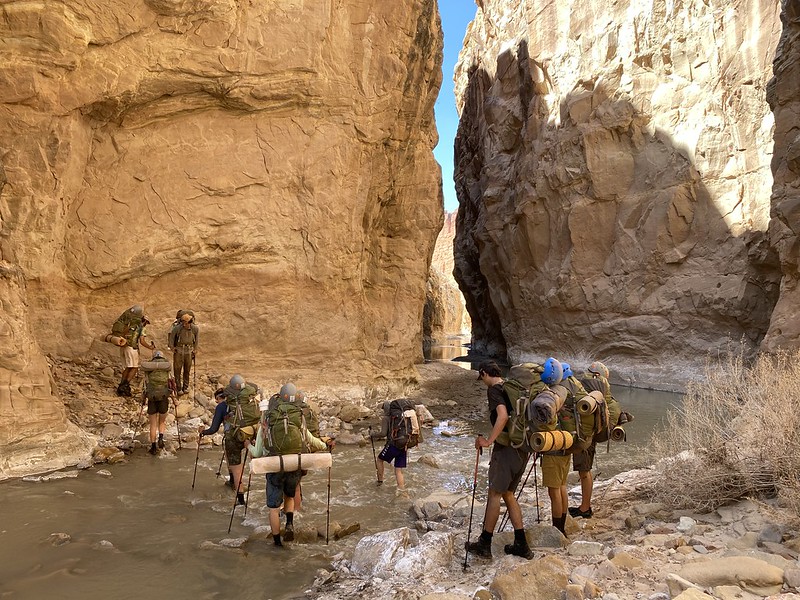
📍Núu-agha-tʉvʉ-pʉ̱ (Ute) lands
Rock Climbing
Outdoor rock climbing can be both mediative and thrilling, making it a highly rewarding sport mentally and physically. It’s a great opportunity to connect with others in the outdoors while also developing confidence in your body. Students will learn new body mechanics, balance, and climbing techniques. Instructors will help students set personal goals as they navigate the rock wall. They will get to experience the incredible feeling of accomplishing a route and pausing at the top to enjoy the views from above the trees. There are many ways to climb the same rock, allowing each climber to solve the puzzle in their own way.
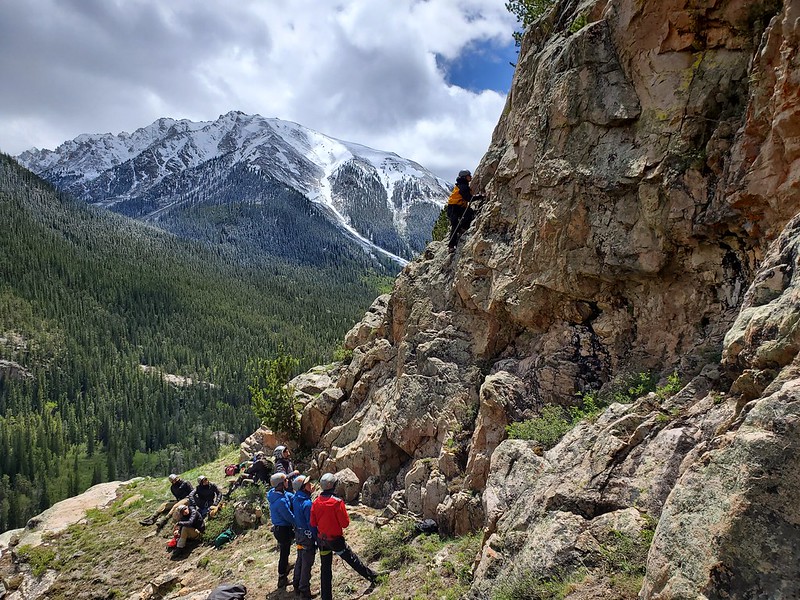
Photo: Joe Kubis |📍Núu-agha-tʉvʉ-pʉ̱ (Ute) lands
Solo
Solo is a time when you’ll get the opportunity to spend time alone during course. With sufficient food and equipment, your Solo will be a chance to reflect on your course experience, journal, and connect with nature. Depending on your course length and environmental factors, Solo can range from 30 minutes to an overnight experience. You will not travel during this time and your Instructors may check on you occasionally. Your solo site will be close enough to your Instructors in case of emergency, but far enough removed to enjoy solitude. Many students are initially nervous about solo, but later recall it as one of the highlights of their course.
Peak Attempt
Peak Attempts present an opportunity for challenge, teamwork, and the need to pull together all of your learned skills for success. Your expedition will include at least one peak attempt. Peak attempts are major enterprises and typically require early morning starts and can take all day to complete. Weather, or other factors including group dynamics and physical readiness, may preclude even an attempt to ascend a peak.
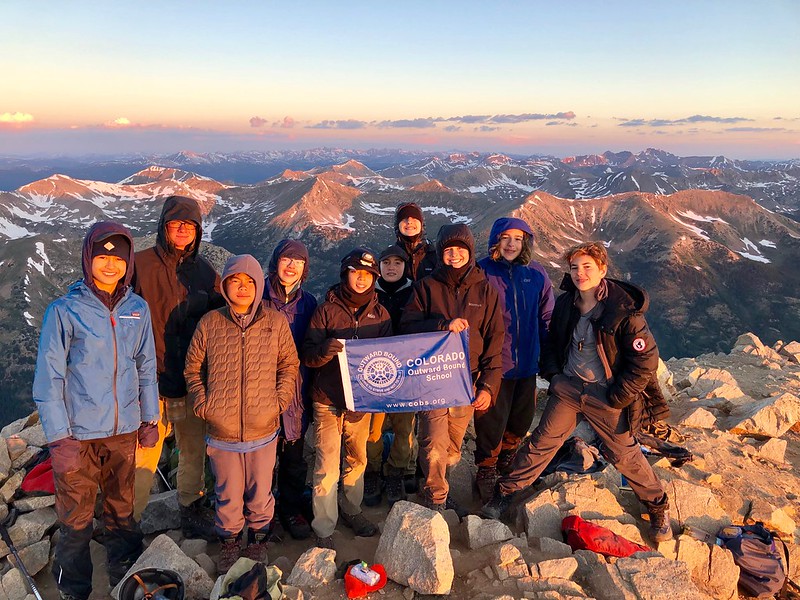
Photo: Naomi Winard |📍Núu-agha-tʉvʉ-pʉ̱ (Ute) lands
Wilderness First Aid
Despite the best risk management, sometimes accidents happen, and knowing how to respond to injuries in a backcountry setting is a key skill for aspiring outdoor leaders. During this section, you will spend two days in a classroom at our basecamp, learning about wilderness medicine. You will have the opportunity to earn a Wilderness First Aid (WFA) certification during this course, which is considered a standard for many entry level jobs in the Outdoor Industry.
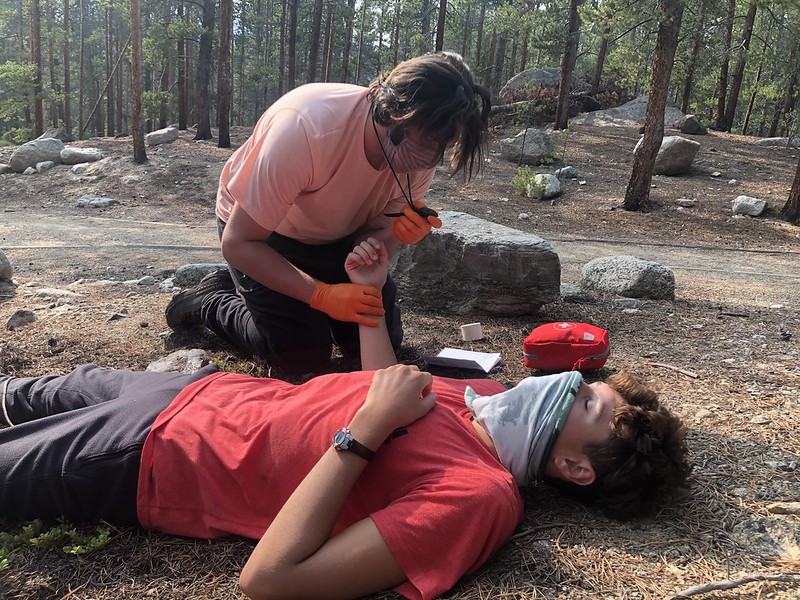
📍Núu-agha-tʉvʉ-pʉ̱ (Ute) lands
Challenge Event
A Challenge Event may occur at the end of a student's course experience. These are opportunities to test the perseverance, endurance, and grit that you've developed on course. A challenge event might be individual, like long run or peak attempt. Your event might be a group focused challenge, including long final travel days or group challenges that require all of the skills and teamwork your groups has learned. The purpose of a challenge event is to help students realize the extent of their growth, physically, mentally, and emotionally, and to take home these learnings in an unforgettable way.
Service
Service is a pillar of the Outward Bound experience. On each course, students learn to practice intentional service to themselves, to others and to the environment. This may look like practicing self-care or supporting a crewmate who is having a hard day. Participants also learn to Leave No Trace ethics, practicing service to the environment by preserving and respecting the fragile ecosystems they encounter. Students experience firsthand the social and emotional benefits of acts of service. They are encouraged to bring this ethic of care to their life back home.
Canoeing
Canoeing is an opportunity to experience the jaw-dropping canyons and magic of the river. The tranquil waters allow for reflection and relationship-building with your canoe partner. The calm waters can change with up-canyon winds that require strength to push forward. The canoes provide you with great freedom and maneuverability. While many of the skills you learn canoeing are transferable to rafts, the small craft will demand a high level of coordination and cooperation with your canoeing partner.
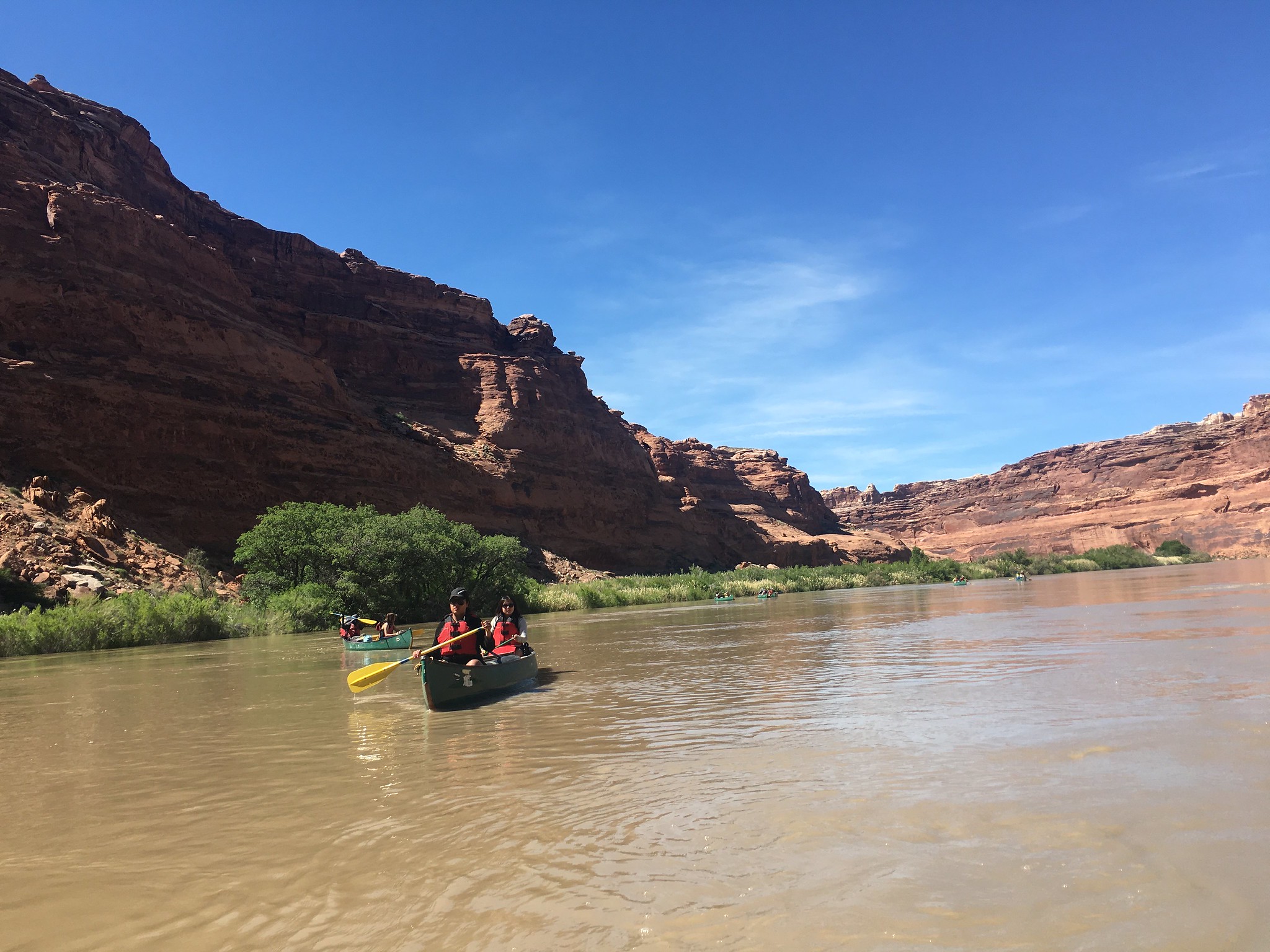
Photo: Ashley Perry |📍Núu-agha-tʉvʉ-pʉ̱ (Ute), Diné, and Pueblos lands
Sample Itinerary
The following is an example of what your itinerary may look like. Your actual course plan will vary according to weather, your group’s skills and abilities, and Instructor preferences.
Days 1-2: Course Start; set up front country camp, gear check, preparation, low rope elements and initiatives, orienteering.
Days 3-4: Wilderness First Aid course
Days 5-20: Rock Climbing; develop climbing skills and craft, group development and getting to know each other, opportunity for student taught lessons, learning food systems and rationing.
Days 20-34: Alpine Backpacking; travel and learn to translate camp craft skills to expeditionary travel, leadership and communication practice, backcountry navigation.
Days 35-42: Mountaineering; technical peak climbing via fixed lines, route finding, and efficient travel are areas of focus. Backcountry rock climbing potential.
Days 43-44: Time for rest, a shower, and a front country meal at basecamp in Leadville. Service opportunity at our basecamp.
Day 45: Travel to Moab, UT for the start of the River section.
Days 46-56: Canoeing; transitioning camping skills to desert, reading the river, desert ecology and natural and human history.
Days 56-70: Canyon Backpacking; opportunity for student facilitations, mastering nagivation in canyon country, solo experience, opportunity for a finals expedition.
Days 71-72: Travel to Leadville for Course End; Service opportunity, closure, opportunity for a challenge event, and travel back to Denver Airport.
Our expeditions help students grow into the best version of themselves. We use adventure in the outdoors to help students discover their strengths and build authentic connections with their peers. Compassion for oneself and others is foundational to the Outward Bound experience. As students develop outdoor skills, they also gain confidence and leadership tools that will last a lifetime. Course outcomes include:
- Belonging – students form deep connections founded upon respect, inclusion, and compassion
- Reflection – students learn self-awareness and practice empathy towards others
- Physical Engagement – students develop awareness and confidence in their bodies
- Courage – students develop the confidence to speak up for themselves and persevere through challenges
Watch to Learn More
Tuition
You can pay your tuition online through your Applicant Portal or make the payment over the phone by calling 720-381-6589.
If your payment is not received by the due date listed in your Enrollment Email and on your Applicant Portal, you will risk losing your spot on course and your $500 deposit. Please review our Admissions and Cancellation Policies.
Travel Insurance
Airfare, travel costs, and non-refundable tuition payments are expensive. Insurance to protect your trip and course is strongly encouraged. We recommend insuring these costs from the third-party provider InsureMyTrip. This provider has coverage options that include travel costs and non-refundable tuition costs. For more information and to receive a free quote, click here.
Click here for COBS COVID-19 Program Practices